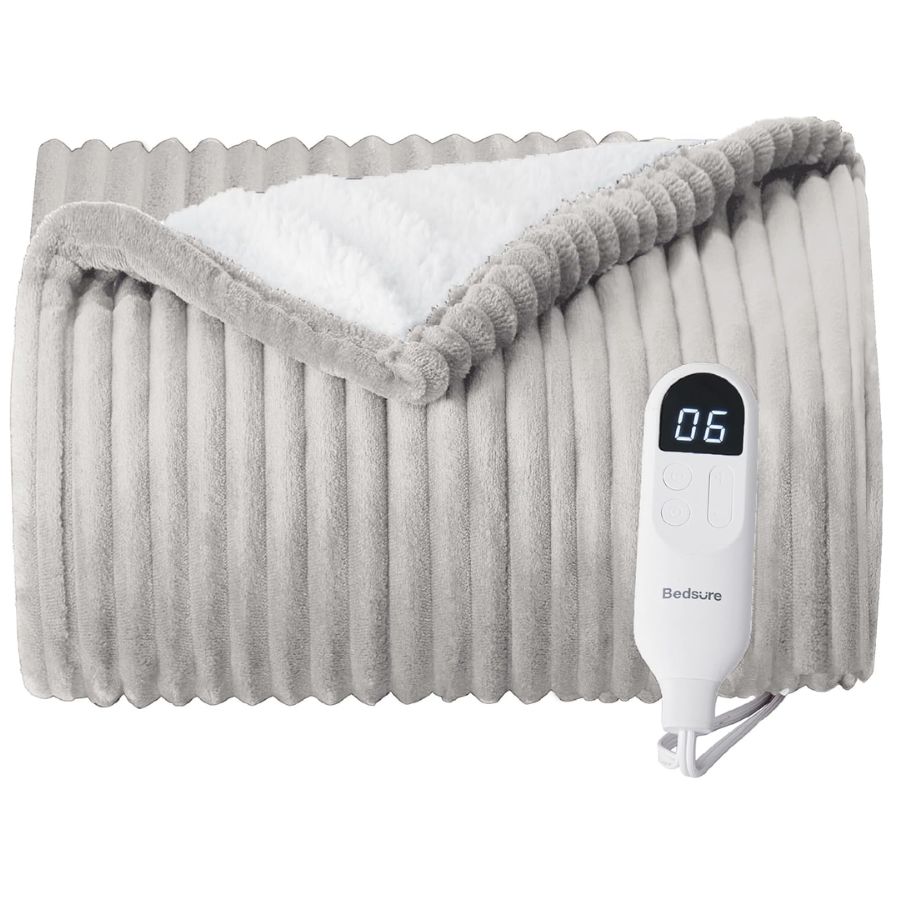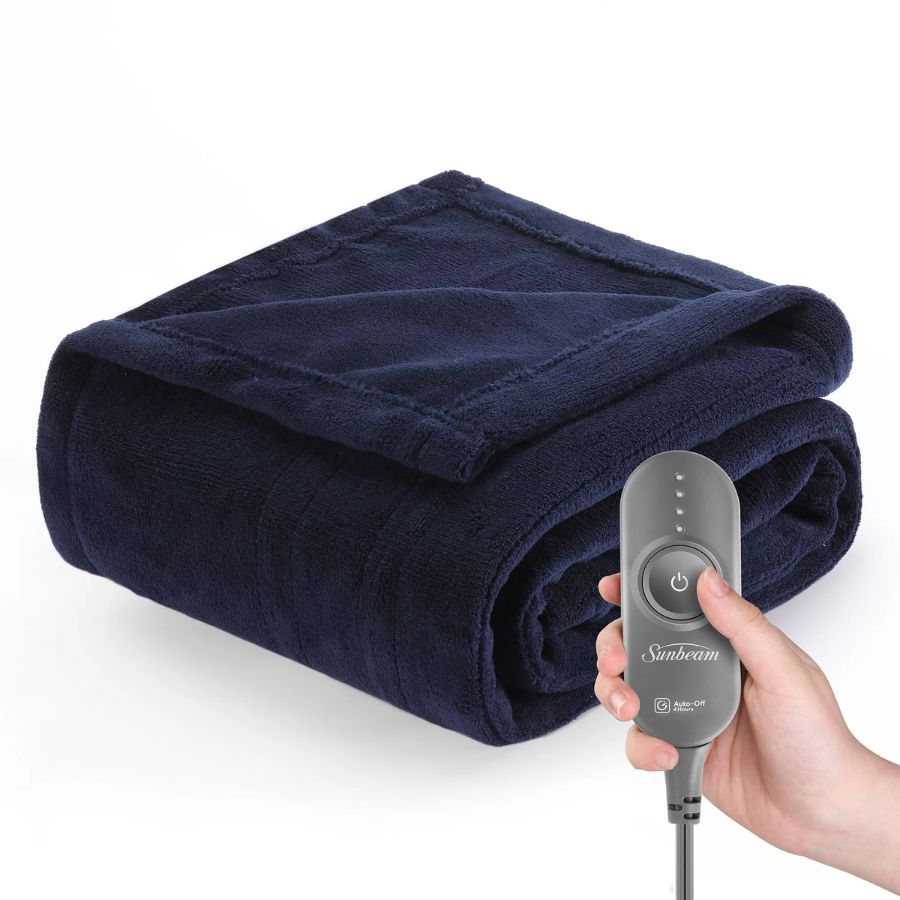How to Wash an Electric Blanket — 5 Simple Steps to Keep Your Heated Throw Fresh
Tis' the season to crack out the electric throw, but you'll need to follow these steps to keep it in good condition


Having a warm and cozy bed is imperative during the winter season and, for many of us in colder climes, that means whipping out the heated blanket. As a recent convert to the technology, I can attest to its brilliance - I'm honestly not sure how I ever lived without one. With using it so frequently, however, it could certainly do with a wash, but the prospect of mixing water with electricity raises a whole host of questions.
Creating a cozy bedroom is at the top of my to-do list every December, and the electric blanket forms the foundation. There's no greater feeling when the weather's cold and crisp than getting into clean sheets with your throw switched on for some extra warmth. The only trouble arises when I'm faced with how to wash it, and since we've all heard the warnings surrounding water and electricity, it's understandable if you have similar concerns.
The good news is that washing an electric throw is easier than you'd think, but don't consider conducting your electric blanket spruce-up without reading these tips from the experts. After following these five steps you're toasty throw is sure to feel so fresh it's like its brand new.
1. Prep your electric blanket before washing

The cardinal rule of laundry care is to always check the label. This remains true when you're cleaning an electric blanket. 'Always start by checking the manufacturer's instructions,' says Taylor Robertson, from Heritage Park Laundry Essentials. 'Some electric blankets may not be water-safe or could have specific cleaning requirements.'
This might seem obvious but it's always worth mentioning. Always make sure your electric blanket is unplugged and all cords are detached since this is crucial for safety and to prevent damage to the heating elements.
Before you commence the cleaning operations, try to remove as much debris as possible - a step that's especially important if your heated throw is in the living room. Shake off any dust, hair, and crumbs that might have collected over time to make the rest of the task easier. You can even use an upholstery attachment on your vacuum cleaner for this job.
2. Spot clean
If there are any specific stains you want to dispel, try spot cleaning first. 'Use a cloth and mild detergent to dab at the stain,' says Emily Adams, cleaning expert at NW Maids. 'When dealing with stains, this is the best approach to take.'
The Livingetc newsletters are your inside source for what’s shaping interiors now - and what’s next. Discover trend forecasts, smart style ideas, and curated shopping inspiration that brings design to life. Subscribe today and stay ahead of the curve.
Taylor agrees: 'For small stains, spot cleaning with a gentle detergent is often sufficient,' he says. 'Apply a small amount of detergent to the stain, gently rub it in with your fingers or a soft brush, and then wipe away with a damp cloth.'
Remember to always use a gentle detergent when dealing with delicate fabrics, and avoid chemicals that could harm the fabric or affect components. This will also keep the fleecy fabric softer which is key if you want ultimate comfort to help you sleep better.
3. Hand wash

'Some electrical blankets are machine safe and some are not,' says laundry professional from Emily's Maids, Alessandro Gazzo. 'Even if they are, I would suggest not to put them in the washing machine unless you absolutely have to.'
All of our experts agree machine washing is not advisable so steer clear of the laundry room and opt for hand washing instead. 'Fill a bathtub or large basin with cool water and a small amount of gentle detergent, then submerge the blanket and gently agitate,' advises Taylor. Once finished do not ring or twist your blanket. Simply rinse with cool water thoroughly to ensure all detergent is removed.
4. Dry flat
To protect the small wires that run through your blanket, you should always dry an heated throw flat. 'To dry, gently squeeze out excess water (don't wring) and hang or lay flat to dry away from direct heat or sunlight,' says Taylor. Don't be tempted to use a hair dryer either. We know you're desperate to get your heated blanket back but don't rush the drying process since this will risk ruining it. There are other ways to keep your bedroom warm and cozy instead.
5. Avoid common mistakes

When cleaning your electric blanket, there are some common mistakes you'll want to avoid. 'First, never dry clean,' says Taylor. 'The chemicals used in dry cleaning can damage the insulation of the electrical wires.'
He also urges you to avoid excessive heat. 'High temperatures can melt or damage the internal wiring,' notes Taylor. The same goes for ironing, too, as this can harm the wiring.
'Lastly, don't use bleach or harsh chemicals,' says Taylor. 'These can degrade the fabric and electrical components.' Take care of your electric blanket properly and it can last forever. Follow these guidelines to keep the electrics and fabric in the best possible shape to keep you warm and cozy for many winters to come.
Can I wash my blanket in a washing machine?

If your heated blanket is machine washable, you can now breathe a sign of relief. However, there are still a few things you ought to be aware of before you simply shove your blanket into the machine and stick it on your regular cycle.
When it comes to how often you should wash your bedding, every week is advised. However, as long as you're not sleeping directly on your heated blanket, you won't need to worry about washing it quite as often. When you do, though, the first point to note is an obvious one - always remove any cables or power sources before you put your blanket in the wash. This is where those warnings against mixing water and electronics come into play. If you don’t have a removable power cord, then your only option is to hand wash instead.
If you still want your blanket to work after a wash, you should only use a short, gentle cycle. 'This way, you minimize the risk of damaging your electric blanket or any of the wires inside it,' says Hayley Thistleton, sleep and bedding expert at Sleepseeker. Whichever pre-set you're using, ensure your spin cycle is on the lowest setting and wash on a cool temperature with only a small amount of detergent.
To avoid breaking the entire washing machine (or worse), make sure you also check your heated blanket for damage first since a damaged wire could result in a fire.
The best electric blankets on the market
FAQs
How should you dry an electric blanket?
It might come as a surprise, but most modern electric blankets are totally safe for use in a tumble drier. However, we'd recommend air drying when possible to minimize any risk.
If it's cold and damp outside, it's a good idea to partially dry your blanket in your drier and then finish of the job on an airer. If you must use a drier, use a cool and gentle setting since high temperatures are likely to damage the wires. You should also never take a heated blanket to be dry-cleaned since the chemicals used in the process will damage the wiring insulation.

Formerly a news writer for Livingetc, Amy completed an MA in Magazine Journalism at City, University of London, and has experience writing for Women’s lifestyle publications across arts, culture, and beauty. She has a particular love for the minimalist aesthetic mixed with mid-century furniture, especially combining unique vintage finds with more modern pieces. Her previous work in luxury jewellery has given her a keen eye for beautiful things and clever design, that plays into her love of interiors. As a result, Amy will often be heard justifying homeware purchases as 'an investment', wise words to live by.


